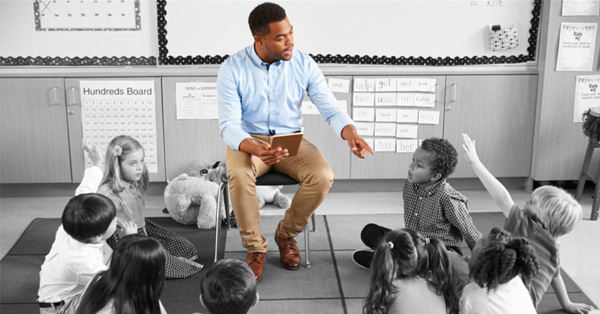
Lesson plans provide a roadmap for successful learning experiences. They lay out the key steps for instruction as a guide for the teacher, in a sequence that optimizes learning for the students. Lesson plans are based on educational standards. They draw upon key content resources, such as textbooks and literature, and may require supplementary materials and tools. A year of carefully structured lesson plans comprises a grade-level curriculum.
Teachers spend a significant amount of time crafting comprehensive lesson plans. But what happens when a teacher absence means a substitute teacher must take over in the classroom? Understanding the basic components of a lesson plan is essential for its successful implementation.
The Key Components of an Effective Lesson Plan
Though lesson plans vary greatly in content and structure, most have several main components in common. A well-designed lesson will help students master learning objectives by leading them through intentionally sequenced activities.
Orienting Students
- Warm-up: To get students primed and ready to learn, a lesson plan often begins with a five to seven minute warm-up. An effective warm-up activity might activate prior knowledge or review foundational content upon which today’s lesson will build. Examples include completing five math problems that review yesterday’s lesson or defining several key vocabulary words and giving examples. The time it takes for students to complete the warm-up activity should provide adequate opportunity to take attendance or gather needed materials before quickly checking responses together.
- Learning Objectives: All lesson plans begin with one or more learning objectives. These are typically content area specific and come from grade-level expectations such as the Common Core State Standards. They guide the teacher in writing and implementing a lesson plan, but when shared with students, they also set a purpose for learning. As such, it is common for teachers to restate a learning objective as an action in age-appropriate terms before posting it for students. For example, the fourth-grade math objective “Recognize a line of symmetry for a two-dimensional figure as a line across the figure such that the figure can be folded along the line into matching parts. Identify line-symmetric figures and draw lines of symmetry.” becomes “I can recognize and draw a line of symmetry in a simple shape.” This sets a clear purpose for the lesson that is more meaningful for students.
- Anticipatory Set: To focus students’ attention and activate their curiosity, the anticipatory set helps prepare students to learn. It might be a video clip or an interesting object, or it could be a well-chosen question or riddle. Its purpose is to draw students into the lesson by getting their attention and connecting it with something they already know.
New Learning
- Direct Instruction: This lesson component is where the new content is introduced. Traditional methods have included lecture and textbook readings, but meeting the needs of diverse learners is better accomplished through more active means. Teacher modeling is effective, as is incorporating audio, visual and tactile or kinesthetic strategies, thus allowing students to experience content through multiple modalities.
- Guided Practice: Teacher-guided practice supports students as they begin to work with the new content. An example would be working through a math problem step-by-step or applying a new skill with teacher support.
- Checking for Understanding: It is appropriate to evaluate students’ understanding throughout the course of a lesson. This is easily accomplished through observation and questioning by the teacher. Having students signify their understanding with hand signals such as thumbs up and thumbs down provides a quick visual that allows the teacher to see who needs help.
- Independent Practice: Once students have had some supported practice and have signified that they are beginning to develop an understanding, it is time for them to try practicing on their own. Sometimes independent practice is given for homework, but ideally, students should work through some examples in the classroom where help is available should they need it.
Following Up
- Closure: Every lesson should provide closure that helps students reflect on what they have learned. This might be a short journal entry or a quick “turn and tell” in which students summarize what they learned and what they might like to know more about.
An ancillary component of a lesson plan is a list of necessary supplies and materials. These will likely include items in the students’ possession, such as textbooks and pencils, but may also include items like handouts that must be distributed.
The Importance of Careful Implementation
A well-designed lesson plan orients students to new content, then provides sequential steps to help them master it. Experienced substitute teachers know how to read and interpret plans. By utilizing appropriate classroom management skills, they are adept at getting students’ attention and maintaining it throughout the teacher-directed portions of the lesson.
With training in an assortment of instructional strategies, they can handle whole-class instruction as well as managing cooperative learning activities. Substitutes with a desire to make a difference and the skills to make it happen can implement a variety of lesson plans efficiently and effectively, allowing instruction to continue uninterrupted during inevitable teacher absences.
Contact ESS for professional substitute teachers trained to implement lesson plans effectively. With comprehensive orientation training and ongoing professional development, our substitute solutions are designed to keep your daily instruction on track.
